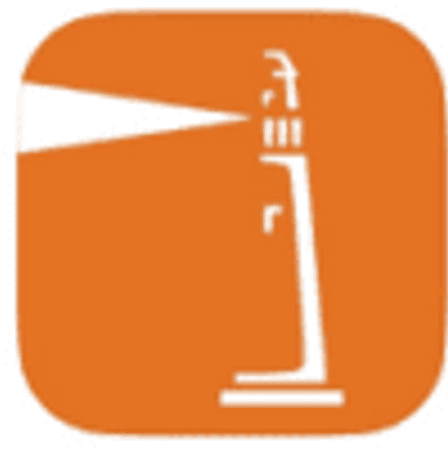Both health system medical plans include prescription medication coverage.
Navitus Health Solutions is the health system’s pharmacy benefits manager (PBM). When you sign up for a health system medical plan, you will receive communications from Navitus by mail and/or email. This includes a pharmacy ID card (separate from your medical ID card) and instructions on how to use the Navitus member portal and mobile app. Navitus will also keep you informed about your medications.
To learn more about your medications, use the Navitus member portal or Navitus’s mobile app.
To manage your health system pharmacy prescriptions, use MyChart web portal and mobile app.
What will I pay for my prescriptions?
How much you pay for your prescriptions depends on four factors: 1) the medical plan you choose, 2) the medication you are prescribed, 3) the pharmacy where you fill the prescription, and 4) how many days’ supply you are prescribed. Open the sections below to learn how these factors affect your prescription costs.
The medical plan you choose will impact how much you pay for your medications. It is important to review the medications you are currently taking to see which plan best fits your needs.
Signature Plan: If you choose the Signature Plan, you will pay a copay of $5 to $200 depending on the medication you are prescribed, the pharmacy you choose and how many days’ supply you receive.
HSA Advantage Plan: If you choose the HSA Advantage Plan, you will pay the full cost of a prescription until you reach your deductible, then you’ll pay a percentage of the cost (called coinsurance) until you reach your out-of-pocket maximum. The cost will vary based on the medication you are prescribed, the pharmacy you choose, and how many days’ supply you receive.
See the pharmacy benefit chart below for more details.
Medication type: Prescriptions fall into three general medication types that help determine where you can fill the prescription and how many days’ supply you can receive.
- Acute medications are prescribed to treat short-term symptoms for a specified time period. (e.g., antibiotics, antivirals, steroids, etc.)
- Maintenance medications require long-term, regular use to treat chronic health conditions. (e.g., asthma, diabetes, high blood pressure, etc.) Please review the maintenance drug list to determine if your prescription falls into this category.
- Specialty medications are high-cost medications used to treat complex health conditions. Please review the prescription drug formulary (and our guide on how to read it) to determine if your prescription falls into this category.
Cost tier: The prescription drug formulary classifies medications using special codes and cost tiers. Special codes – like MSP, UKMSP, or LD – are frequently used to indicate specialty medications. Cost tiers – usually 1, 2, or 3 – indicate whether a medication is generic, preferred brand or nonpreferred brand.
- Generic medications (Tier 1) are the most cost-effective option for many prescriptions. Generic drugs must work in the same way and provide the same clinical benefit as their brand-name counterparts to be approved by the Food and Drug Administration (FDA).
- Preferred brand medications (Tier 2) are brand-name medications that are favored over other brand-name medications on the formulary. Choosing a preferred brand when a generic is available will result in higher cost. You may want to talk to your provider to determine if switching to a generic medication can save you money.
- Nonpreferred brand medications (Tier 3) are the highest cost option for covered prescriptions on the formulary. Choosing a nonpreferred brand when a generic or preferred brand is available will result in higher cost. You may want to talk to your provider to determine if switching to a generic or preferred brand medication can save you money.
If you are enrolled in the Signature Plan, both medication type and cost tier affect the amount of your copay. For example, as indicated in the pharmacy benefit chart below, a 30-day supply of a maintenance and generic prescription requires a $5 copay while a 30-day supply of a specialty and generic prescription requires a $20 copay.
If you are enrolled in the HSA Advantage Plan, neither medication type nor cost tier affect the percentage of your coinsurance. However, choosing lower-cost generics vs. higher-cost brands can affect the amount of your coinsurance.
Learn more about medication types, special codes and cost tiers in our guide on how to read your prescription drug formulary.
Maintenance and specialty medications must be filled by the health system pharmacy. This helps maintain lower deductibles, coinsurance and copays, which means you can get the best service and most cost-effective options for your prescriptions through the health system pharmacy. As indicated in the pharmacy benefit chart below, maintenance and specialty medications are not covered at in-network pharmacies.
Acute medications can also be filled by the health system pharmacy. Again, you can get the best service and most cost-effective options for your prescriptions through the health system pharmacy. Acute medications are also covered at in-network pharmacies, but you will pay a higher copay or coinsurance than you would at a health system pharmacy.
The health system pharmacy has five locations, but there is rarely any reason to visit in person because they offer convenient delivery. Please refer to our guide for using the health system pharmacy to learn how to fill, refill or transfer your prescriptions, plus how to pick up your medications or have them delivered.
| The University of Kansas Health System, Bell Hospital | The University of Kansas Hospital, Indian Creek Campus | The University of Kansas Hospital, Cambridge Tower A | Westwood Medical Pavilion |
11300 Corporate Ave. Lenexa, KS 66219 | 4000 Cambridge St. Kansas City, KS 66160 | 10710 Nall Ave. Overland Park, KS 66211 | 3825 Cambridge St. Kansas City, KS 66160 | 2650 Shawnee Mission Pkwy. Westwood, KS 66205 |
| | | | |
To fill acute prescriptions in Great Bend, Medical Park Pharmacy (1309 Polk St., Great Bend, KS 67530, 620-792-1221) offers more cost-effective options than other in-network pharmacies.
|
Search for in-network pharmacies on the Navitus pharmacy network list, the Navitus member portal or the Navitus mobile app (Apple App Store / Google Play).
If you are enrolled in the Signature Plan, you can ask your provider to prescribe up to a 102-day supply of acute or maintenance medications, as appropriate. This will help you save money – you can receive a 3-month supply for the cost of a 2-month supply. For example, as indicated in the pharmacy benefit chart below, you will pay $5 if prescribed a generic maintenance drug for 30 days, but you will pay $10 if prescribed a generic maintenance drug for up to 102 days.
If you are enrolled in the HSA Advantage Plan, you can ask your provider to prescribe up to a 102-day supply of acute or maintenance medications, as appropriate. You won’t have to refill the prescription as frequently, but your coinsurance percentage (indicated in the pharmacy benefit chart below) will remain the same.
Specialty medications are limited to a 30-day supply in both the Signature Plan and the HSA Advantage Plan.
Pharmacy benefit chart
This chart can help you estimate prescription costs – copays for the Signature Plan and coinsurance for the HSA Advantage plan – based on the medication you are prescribed, the pharmacy where you fill the prescription, and how many days’ supply you are prescribed. Learn more about deductibles, copays, coinsurance and out-of-pocket maximums in our guide to understanding how you and the health system share the cost for your healthcare expenses.
| | |
| | | | |
| | | | | | |
| | | | | | |
| | | | |
Nonpreferred brand / Tier 3 | | | | |
Maintenance prescriptions^ | | Maintenance prescriptions
NOT COVERED at in-network pharmacies | | | Maintenance prescriptions
NOT COVERED at in-network pharmacies |
| | | |
| | |
Nonpreferred brand / Tier 3 | | |
| | Specialty prescriptions
NOT COVERED at in-network pharmacies unless
indicated by formulary | | Specialty prescriptions
NOT COVERED at in-network pharmacies unless
indicated by formulary |
| | |
| |
Nonpreferred brand / Tier 3 | |
*Certain medications used for chronic conditions or risk reduction are included the preventive drug list. HSA Advantage Plan members will pay Signature Plan copays for medications on this list. These copays will not apply to the HSA Advantage Plan deductible but will apply to the out-of-pocket maximum.
** While the health system pharmacy should be your first choice for prescriptions, many pharmacies throughout the nation participate in the pharmacy network.
^ See definitions for acute, maintenance and specialty prescriptions as well as generic, preferred and nonpreferred prescription tiers in “2) The medication you are prescribed” above.
^^ HSA Advantage Plan members will pay 100% until their deductible is met, then pay the indicated percentage coinsurance until their out-of-pocket maximum is reached.
|
For more information on managing prescription costs, read our tips to make the most of your pharmacy benefit.






